Explore the heritage of Kentucky’s Bluegrass region
Find Thoroughbreds, bourbon, natural beauty, and more
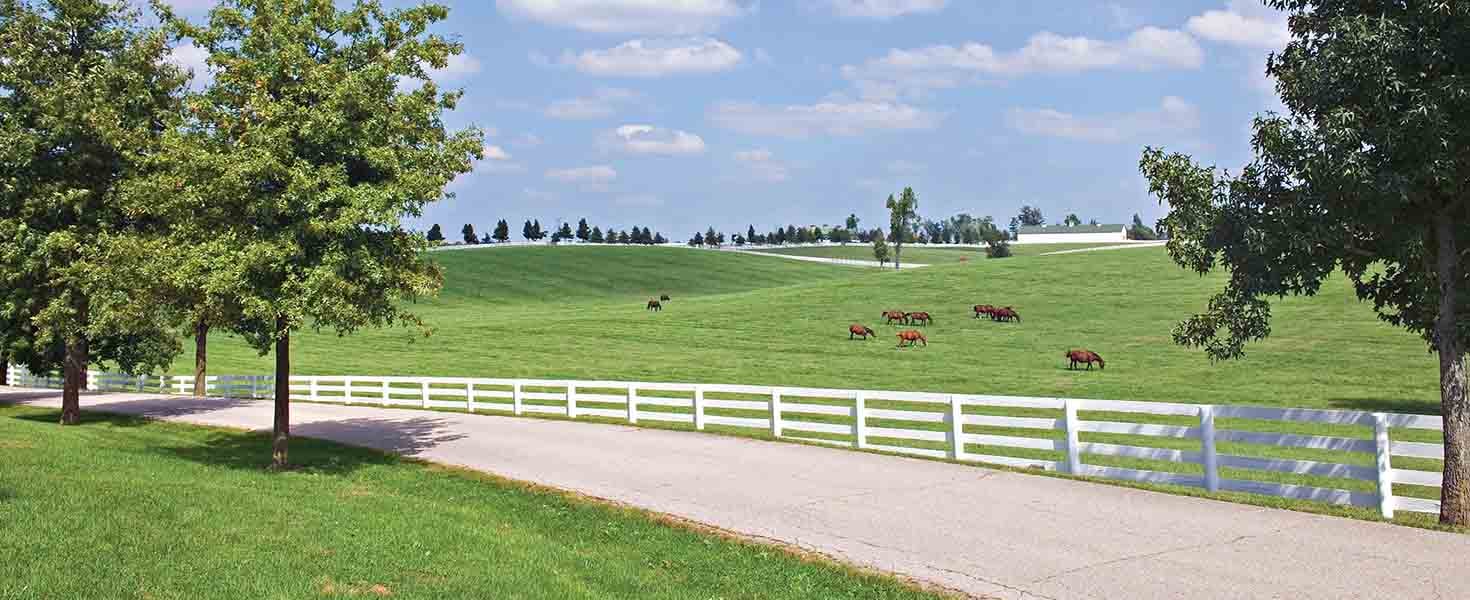
For two thrilling minutes each May, the world’s attention turns to Kentucky, where the annual Run for the Roses—otherwise known as the Kentucky Derby*—highlights two of the state’s specialties: thoroughbred horses and bourbon. There’s no better introduction to Kentucky’s equestrian and bourbon heritages than a road trip through the Bluegrass region in central Kentucky—and it’s a trip you can take year-round, not just in May. The Bluegrass region is a place of stunning natural beauty, with thousands of acres of rolling horse pastures and country roads lined with rail fencing or Kentucky limestone walls.
Start your trip by hoofing it to Lexington, the Horse Capital of the World. From downtown’s skyscrapers, you can get to those fields of thoroughbreds in less than 15 minutes. The 1,224-acre Kentucky Horse Park on the city’s edge is a veritable equine theme park with 80 horses from 30 different breeds. Both indoor and outdoor tracks host more than 200 special events each year, such as this September’s Equitana U.S.A., a three-day celebration of horses that draws visitors from all over the globe. Daily activities include the Parade of Breeds and draft horse demonstrations. Choose from other activities such as horseback riding and grooming lessons, or peruse thousands of equine artifacts, including five Triple Crown trophies, at the International Museum of the Horse. Two former Kentucky Derby winners, both thoroughbreds, reside here: Funny Cide and Go for Gin.
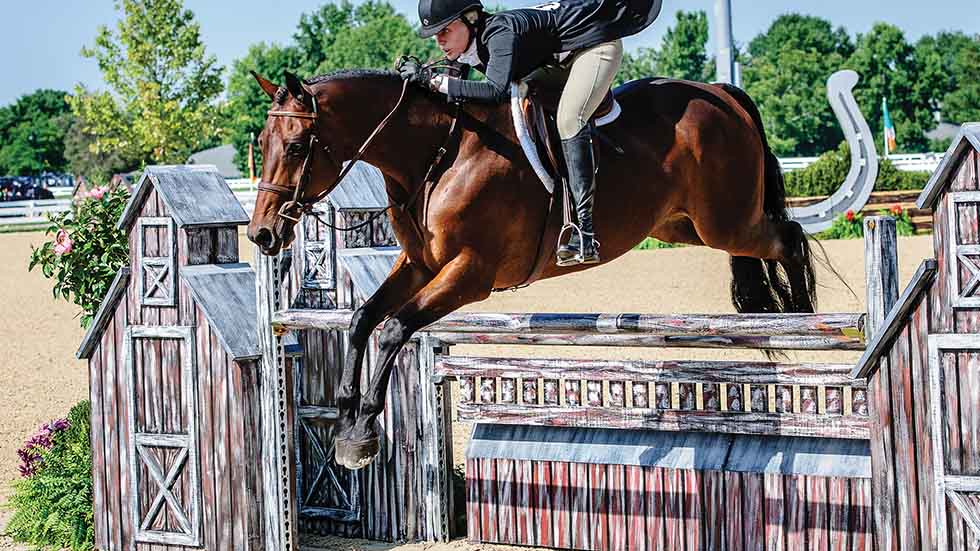
Equine activities at the Kentucky Horse Park. Photos courtesy of Kentuckytourism.com
About 30 horse farms in the Bluegrass region also welcome visitors, such as Coolmore’s Ashmore Stud near Versailles, home of Triple Crown winners American Pharaoh and Justify, and Claiborne Farm outside Paris, home to the grave of Secretariat. If you want to see horses training or actually pet them, check out visithorsecountry.com, which can help you find listings of farms that offer the experience you’re looking for.
Early spring and summer are good times to observe newborn colts frolicking in the fields. Also consider a stop at Lexington’s Keeneland racetrack. Although racing here is confined to April and October, you can watch horses training in the early morning in other months or sit elbow to elbow with jockeys and trainers in the track kitchen, an on-site restaurant that’s open to the public. On November 6 and 7, Keeneland will host the 2020 Breeders’s Cup World Championships, an annual series of Grade I Thoroughbred horse races.
While you’re tooling along U.S. 60 in Keeneland’s neighborhood, take a turn down Pisgah Pike or Old Frankfort Pike, two of the more scenic routes, with horse farms and stately mansions lining both sides of the road.
THE ROADS LESS TRAVELED
Ready to move on? Follow U.S. 68 westward out of Lexington, briefly passing beside the snaking Kentucky River and beneath towering cliff faces known as the Palisades. About 45 minutes outside the city, make a lengthy stop at Shaker Village of Pleasant Hill in Shakertown, home from 1805 to 1922 to the country’s third-largest Shaker community. Its 34 historic structures include the Family Dwellings, where the former residents lived communally, and the meeting house, where they once sang and danced so energetically that they could reportedly be heard miles away. Daily programming at Shaker Village features hands-on old-school activities (think broom making and the like) as well as talks on such subjects as “Shaker Trouble Makers.” Shaker Village puts emphasis on visitor participation, so instead of watching a costumed interpreter demonstrate Shaker dancing, you’re encouraged to get on your feet and shake a leg yourself.
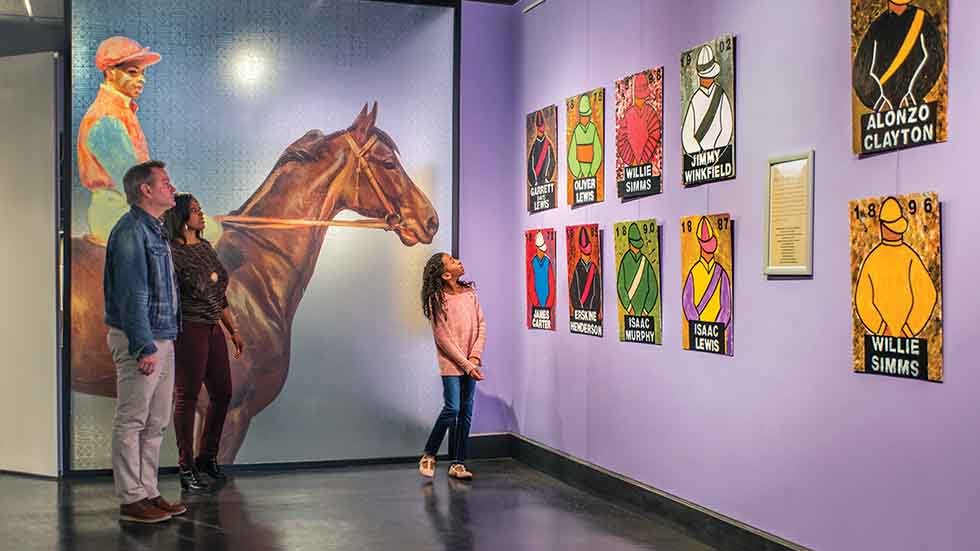
International Museum of the Horse. Photos courtesy of Kentuckytourism.com
From Shaker Village, continue west on U.S. 68 to Harrodsburg and Old Fort Harrod State Park, where you’ll find a full-scale reproduction of Fort Harrod, established in 1774. Its log structures include the militia blockhouse and the fort’s walls. Another of the state park’s attractions is the Greek Revival-style Mansion Museum, which houses a collection of artifacts dating from the 16th century through the early 1900s, including an extensive collection of early firearms. Don’t miss the fort’s gift shop, where you can stock up on Kentucky-specific souvenirs, crafts and more, many of them made in Kentucky or by interpreters on the fort’s grounds.
A few miles farther down the road in Perryville, you’ll leave U.S. 68 and turn westward onto U.S. 150, but before doing that, follow signs in Perryville that will lead you just outside the town to the nearby Perryville Battlefield, site in 1862 of Kentucky’s bloodiest Civil War battle. Its 1,000 acres of rolling farmland is largely unaltered from the time cannons thundered here. A self-guided walking tour has signage pointing out places such as the so-called Valley of Death, where Confederate troops were trapped in deadly artillery crossfire. Farther along U.S. 150, a quick detour near Springfield guides you to Lincoln Homestead State Park, dotted with several structures; notable among them is a two-story log cabin where it’s said that Lincoln’s father proposed to his mother in front of the first-story fireplace.
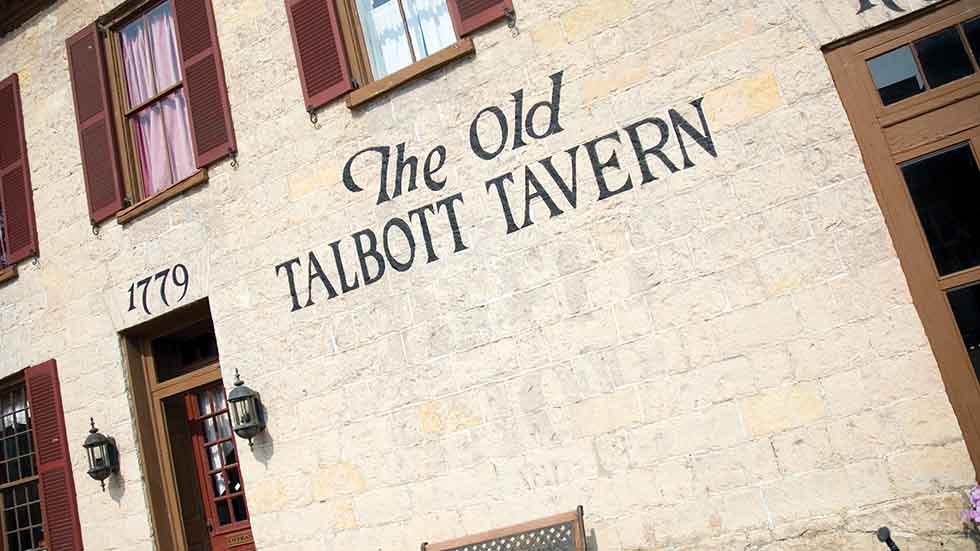
The Talbott Inn, the centerpiece of Bardstown’s town square since 1799, is now a tavern and bed-and breakfast. Photos courtesy of Kentuckytourism.com
FROM BEAUTY TO BOURBON
The ultimate goal of this Bluegrass region road trip is to reach the city of Bardstown, described by the folks at Rand McNally a few years back as “The Most Beautiful Small Town in America.” Its charming downtown, with 19th-century storefronts presided over by a towering brick courthouse, is worthy of that assessment. Allow time to explore Bardstown’s many attractions, especially My Old Kentucky Home, where the late composer Stephen Foster once visited his cousins, the prominent Rowan family, at a home that’s believed to be the inspiration for what’s now Kentucky’s state song. Your guide will sing it to you when you arrive.
Elsewhere in town, take a ride on My Old Kentucky Dinner Train, and enjoy classic Southern fare in train cars from the 1940s as you roll through the beautiful countryside. And stop by the Talbott Inn, the centerpiece of the town square since 1799. Now both a tavern and a bed-and-breakfast, the inn over the centuries has hosted such luminaries as Louis Philippe, the exiled king of France; Abraham Lincoln, when he was a toddler; and General George Patton. Don’t miss the bullet holes in the upstairs walls—the result of shots taken by outlaw Jesse James during a card game.
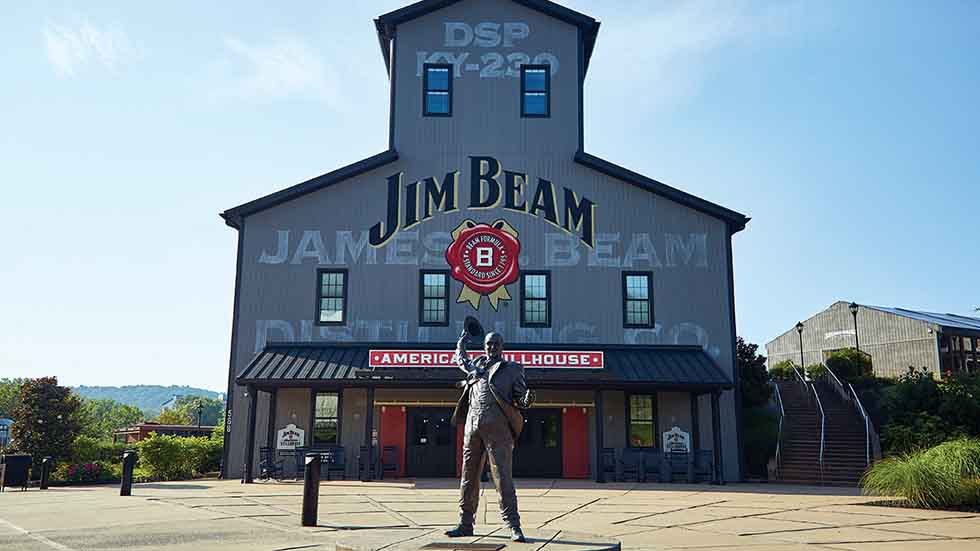
The Jim Beam American Stillhouse. Photos courtesy of Kentuckytourism.com
As the Bourbon Capital of the World, Bardstown is also home to nine bourbon distilleries and within a short drive of several other well-known bourbon producers, including the Jim Beam American Stillhouse, one of the world’s oldest distilleries, and Maker’s Mark, where visitors can dip their purchased bourbon bottles into the distillery’s signature red wax.
Local companies will drive you around the area on tours that focus on the history and production of bourbon, and you may well be given the chance to stick your finger into a vat of bubbling bourbon mash. Tours typically end with a tasting of each distillery’s wares. Trust us, you’ll want to let a tour guide drive you between attractions and back to your lodging. We want you to stay safe and return from your road trip with only good memories of your experiences in Kentucky’s Bluegrass region.
*At our time of publication, this year’s Kentucky Derby had been moved to September 2020.
